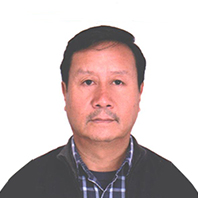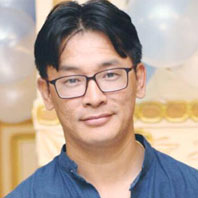Detailed Itinerary
Day 1: Arrival Kathmandu, transfer to hotel
Arrival Kathmandu, transfer to hotelDay 2: Kathmandu free day hotel
Kathmandu free day hotelDay 3: Kathmandu - Official formalities, hotel
Kathmandu Sight Seeing.Day 4: Flight: KTM-Lukla
Flight: KTM-Lukla 2850 m, Trek to Phakding 2600m – approx. 4 hrs walkDay 5: Trek to Namche
Trek to Namche 3440m; approx. 5 hrs walkDay 6: In Namche
In Namche - Acclimatize – day hike to Khumjung village – approx. 5 hrs walkDay 7: Trek to Deboche
Trek to Deboche 3770m; approx. 6 hrs walkDay 8: Acclimatization day in Deboche
Acclimatization day in DebocheDay 9: Trek to Dingboche
Trek to Dingboche 4410m; approx. 5 hrs walkDay 10: Trek to Acclimatize Dingboche
Trek to Acclimatize DingbocheDay 11: Trek to Lobuche
Trek to Lobuche 4910 m; approx. 5/6 hrs walkDay 12: Trek to Gorakshep
Trek to Gorakshep 5140 m; approx. 6 hrsDay 13: Trek to Everest Base Camp
Trek to Everest Base Camp 5365m; approx. 4/5 hrs walkDay 14 - 36: Climbing period of Mount Everest
Climbing period of Mount EverestDay 37: Return back to base camp
Return back to base campDay 38: Heli flight to Lukla & Regular flight to KTM, hotel
Heli flight to Lukla & Regular flight to KTM, hotelDay 39: Kathmandu free day, hotel
Kathmandu free day, hotelDay 40: Final Departure, transfer to Airport
Final Departure, transfer to AirportEssential Info
Visa
Most nationalities require a visa for Nepal, which can be obtained in advance or on entry. If you wish to apply before departure the current visa cost is £20 for a 15 day visa and £35 for a 30 day visa for UK passport holders. The current cost of a visa on arrival is US$25 for 15 days, US$40 for 30 days or if extending your stay $100 for 90 days. All are multiple entry. The visa on arrival fee can be paid for in cash in US Dollars, Pounds Sterling or Euros. You will also need a passport photo. Application forms are available in the immigration hall (or for electronic passports there are visa registration machines which, after inserting your passport, automatically fill out a form for you). You must firstly join the queue to pay the visa fee, and then go to the relevant immigration desk to obtain your 15, 30 or 90 day visa stamp. There can be long queues for visas on arrival.Non UK nationals should check requirements with their nearest embassy (a few nationalities are not permitted visas on arrival).
Vaccinations
There are no mandatory vaccination requirements. Recommended vaccinations are: Polio, Tetanus, Diphtheria, Typhoid, Hepatitis A. The risk of malaria is present in certain regions only (such as Chitwan); you may wish to consult your GP or travel health clinic for further advice. Dengue fever is a known risk in places visited. It is a tropical viral disease spread by daytime biting mosquitoes. There is currently no vaccine or prophylaxis available for Dengue, and therefore the best form of prevention is to avoid being bitten. We recommend you take the usual precautions to avoid mosquito bites. Most of our trips to Nepal go to high altitudes where there is a risk of being affected by Acute Mountain Sickness. Our itineraries are designed to enable everyone to acclimatise to these altitudes, but you should be aware that it is still possible for you to be affected. Please refer to the TRIP NOTES for complete advice on AMS.Eating & Drinking
Breakfast is included throughout the trip and all meals are provided while camping (all breakfasts, 3 lunches and 2 dinners).Breakfast is included throughout the trip and all meals are provided while camping. On trek the breakfast will be a set menu usually consisting of porridge and toast. Any additional items that are not included in the set menu should be ordered and paid for separately. We do not include lunch and dinner in the tea-houses, allowing you to choose what you want to eat and when. Although most lodges have almost identical menus, they are reasonably extensive and offer a varied selection, ranging from traditional Nepalese dhal bhat to pizza and apple pie.
Although meat is available in the teahouses, we advise against eating it on trek. The meat has often been carried in the heat from lower altitudes for several days before reaching the lodges, and can cause stomach upsets or illness. Germs can also be spread by handling dirty money - we recommend using hand sanitiser.
If you buy imported food and drink whilst on trek you will spend more than the suggested amount.
Drinking Water
Staying hydrated is important when undertaking any physical activity but particularly so at altitude where it is generally recommended to drink at least 3-4 litres per person per day.We strongly encourage you not to buy bottled water on trek as this contributes to the growing problem of plastic pollution in Nepal’s trekking areas.
All teahouses will provide cold water free of charge, if requested. Although this should not be drunk untreated, we recommend that you bring a reusable bottle with a wide opening (Nalgene or similar) with you and use a SteriPEN to treat it with. A SteriPEN is a handheld UV water purifier – small, lightweight and battery powered so easy to pack for a trek. In Nepal’s trekking regions most of the bottled water isn’t strictly ‘mineral water’ anyway but is UV treated, so it’s exactly the same technology. It’s quick to use, far more effective than purification tablets, and the water is ready immediately. It’s fine to use a SteriPEN on non-boiled water so long as it isn’t cloudy or full of sediment (which is uncommon in these regions).
SteriPENs are widely stocked on Amazon, outdoor shops and other online retailers; look for the latest models but avoid USB charging ones. Better still, a SteriPEN will pay for itself over the course of the trek and you won’t leave behind a single plastic bottle – you will end up spending the same or even less than you would on bottled water, plus you can keep it for future trips.
If you prefer not to invest in a SteriPEN, the teahouses also sell boiled water for approx. Rs150-300 per litre (the price increases the higher you trek) which should not require treating. This is also perfect for a bedtime refill as it can double up as a hot water bottle.
While camping boiled water is supplied for drinking.
Weather
The main trekking season in Nepal is from October to mid-May when daytime temperatures at most altitudes are generally comfortable for walking, the sky is clear much of the time and rain and snow are occasional occurrences. Daytime temperatures will vary from 15ºC to 35ºC in the Kathmandu Valley to around 10ºC at 3,600m and progressively lower the higher we go.Different seasons offer different advantages for trekking.
Post Monsoon/autumn: Mid-September to November. This is the main trekking season in Nepal. Day temperatures in Kathmandu are approximately above 20ºC. Skies are usually clear and days on trek are sunny and mild with clear mountain views. At the highest altitudes although the days can be nice and sunny the temperatures can drop to 10ºC and much lower. Nights will be colder with temperatures dropping as low as minus 10ºC and lower at the highest altitudes.
Pre-monsoon/spring: March to May. Both day and night temperatures will be warmer in general but haze will often build up in the afternoons. It is very hot in the lowlands and temperatures rise to 35ºC in Kathmandu. Flowers bloom in this season and this is one of the reasons people chose to trek in spring.
Snow can be expected on any departure, usually at the higher altitudes. Summit day will be a very early start (usually about 2am) and will be extremely cold. Although mostly it is calm and clear on summit day the mountain does occasionally get high winds. You need to be equipped for temperatures as low as minus 25ºC plus wind chill on summit day.
Please remember that in any mountain area the weather is never wholly predictable and you should be prepared and equipped to deal with any differences in weather beyond the conditions described above.
Fitness Level and Technical Ability
Climbers wishing to join this expedition must already be experienced with rock and ice climbing and have successfully completed previous climbs at high altitude, over 4500m (15,000ft).This expedition requires excellent levels of fitness to endure the extreme conditions of summiting big peaks. To prepare for this, climbers should undergo a regular and strenuous exercise regime for at least 6 months to build their strength, stamina and endurance.
Our Specialist
How to Book
We like to offer a personalized service to our clients – you can contact us by email or telephone any time. Please let us know if you wish to chat with us via Skype, Whatsapp or Viber and we can connect with you at a time that is suitable for you and us, depending on where you are in the world and the timezone you are in.
Check availability:
Go online to check availability, or contact us by phone or email.
Secure your place
You can provisionally hold a place on this trip, usually for between three and seven days.
To Book
Let us know which trip you would like to join. For trips that require a certain level of skills and prior experience, we will ask you to provide us with details so that we know the trip is the right one for you.We will send you a form for you to complete your personal details, medical and fitness information. We will also send you our bank details for you to make payment – we will tell you how much and how to pay.
When you are ready, simply complete the form and send it back to us and let us know once you have deposited the relevant funds into our bank account.
We will send you back a written acknowledgement and other information about your trip such as a gear list and any other relevant information specific to your trip.
Of course, at any time leading up to your trip, if you have any questions, please do not hesitate to contact us as we will want to give you as much information as you need so that you can feel comfortable and excited about your forthcoming adventure.
We look forward to having you on an adventure with us!



